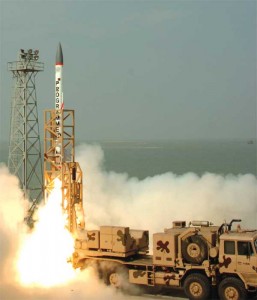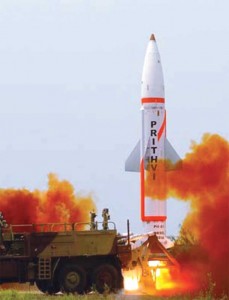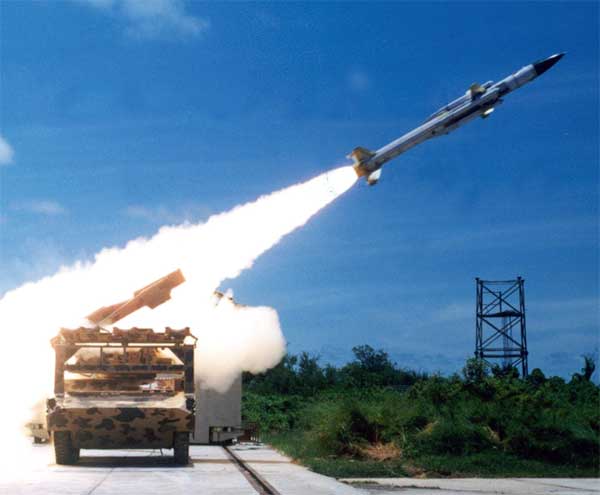As threats from the air play a decisive role in war, there will always be a need to protect the vital static assets as well as retain the freedom to manoeuvre mobile combat forces with no or minimum interference from the skies. The onus lies on the Army Air Defence to overcome the increasing challenges from the air with the enemy using sound strategic/tactical concept and efficient AD weapon systems. An effective AD system is thus a force multiplier for all the combat forces giving them the freedom to carry out operational tasks optimally.
Modernisation of AD weapons has been losing out to more common weapons such as artillery guns, tanks and infantry weapons…
The maintenance of an effective Air Defence (AD) system both in peace and war is a national imperative. Air Defence is a protective reaction against active enemy air threat. There has been an exponential development in the quality and magnitude of air threat due to technological innovations such as stealth, long range precision strike capability and beyond visual range stand-off weapons. Use of smart/intelligent ammunition makes the air threat more potent and lethal. Over the years, air operations have graduated from conventional aircraft to a variety of aerial platforms such as the low silhouettes, low signal Unmanned Aerial Vehicles (UAVs), Surface to Surface Missiles (SSMs), Cruise Missiles, Anti Radiation Missiles and Precision Guided Munitions (PGMs).
As threats from the air play a decisive role in war, there will always be a need to protect the vital static assets as well as retain the freedom to manoeuvre mobile combat forces with no or minimum interference from the skies. The onus lies on the Army Air Defence to overcome the increasing challenges from the air with the enemy using sound strategic/tactical concept and efficient AD weapon systems. An effective AD system is thus a force multiplier for all the combat forces giving them the freedom to carry out operational tasks optimally.
A foolproof AD requires closely coordinated, joint and combined forces efforts incorporating the latest technology and concepts. The Air Defence of the country is a joint responsibility of all the defence forces. The Corps of Army Air Defence (AAD) is tasked for AD of the Indian Army (IA) as well as national/strategic/earmarked other forces’ assets.
The Indian Air Force has always been objecting to all AD weapons acquisition proposals by the Army…
Present State of Army Air Defence
A letter to the then Prime Minister Manmohan Singh by the former Chief of Army Staff, General V.K Singh before his retirement about the critical state of the Army, had highlighted the alarming state of the vintage weapon systems held by AAD. It was mentioned that 97 per cent of the inventory of AAD was obsolete. This statement that raised the concerns of the citizens of the country was technically correct as there has been no major induction of any AD weapon system in the IA after receipt of Tunguska Gun/Missile System in 1997.
All other existing Ground-Based AD Weapon Systems (GBADWS) are over 25 to 30 years old. Some of them are of 1960s and 1970s vintage. The main weapon held by the corps of AAD, the 40 mm L/70 AD gun, is of late sixties vintage. Kvadrat Surface to Air Missile and Schilka Self-Propelled AD gun systems were used during the Yom- Kippur War of 1973. As on date, there is no equipment available to raise AD units for the new Mountain Strike Corps. Holding of AD missiles and gun ammunitions is also low resulting in restriction on peacetime training firing practices. The average shelf-life of any missile system is seven years. With this stipulation, most of the SAMs held have finished their shelf-life. A sample test of these missiles is carried out and their life is extended every year. Any old missile or gun ammunition can go rogue during any training firing resulting in serious damage to men and material.
Why this State of AAD?
- Intra-Service Reasons
Modernisation of AD weapons has been losing out to more common weapons such as artillery guns, tanks and infantry weapons due to biased priorities of the decision makers of the Army. Also GBADWS are expensive and need a higher percentage of capital budgets. There is also a tendency to compare own weapons holding to that of our adversaries. This is applicable for tanks and artillery guns but not for AD.

Launch of India’s Advanced Air Defence (AAD) Missile, test conducted on 6 December, 2007 from DRDO’s Integrated Test Range, Chandipur (Photo Courtesy: www.en.wikipedia.org)
The AD is meant to provide protection from enemy air attack. So rather than comparing AD weapon holdings with adversaries’ AD, there is a need to look into their air strength. As discussed above air threat has increased substantially.
- Inter-Service Issues
The Indian Air Force (IAF) has always been objecting to proposals for acquisition of AD weapons by the Indian Army. The IAF is of the view that AD of the nation is its responsibility. There is no doubt that during peacetime, surveillance and defence of air space is the responsibility of the IAF but during war, all services are specifically responsible for AD of their own assets and operations.
Some of the army’s GBADWS are also employed for protection of IAF assets such as airfields. These unwanted objections by the IAF have also contributed to the delay in acquisition of the new weapon systems by the Army.
A foolproof AD requires closely coordinated, joint and combined forces efforts incorporating the latest technology and concepts…
- Indigenisation
A major hurdle in the modernisation of AAD has been the Defence Research and Development Organisation (DRDO). The DRDO invariably objects to any proposal at Acceptance of Necessity (AON) stage stating that it would be able to make the subject weapon system indigenously thereby blocking the acquisition from abroad. But DRDO has not been able to meet the requirement of GSQR-compliant weapon systems resulting in obsolescence of AAD. The DRDO embarked on a project to manufacture the Gatling gun to replace the 40mm L/70. However, the project was abandoned in the late nineties due to lack of worthwhile progress.
An alternative suggested was modification of the ship-based naval AD gun, the AK610, for ground-based AD role. Even after two years of efforts, the project did not succeed. Similarly, as replacements for OSA-AK and Strella-10M, DRDO started developing the Trishul SAM, but had to close down the project due to poor progress. However, giving credit where due, DRDO has been successful in making Akash SAM system, for which the IAF and the IA have placed orders. Though based on 1984 GSQR, it is an advanced weapons system capable of engaging aerial targets effectively up to 25 km of range.
- Complex Procurement Procedures
The Defence Procurement Procedure is very complex and negotiating it is a herculean task. It can fail at any of the seven major stages (AON, TEC, Trial, General Staff Evaluation, CNC/PNC, Contract and Delivery) and the whole process must begin again. Also, the MOD always supports DRDO/PSU. It takes a large number of meetings to convince them to get the case moving. When a case is moving smoothly, the MOD gets a letter from any politician/MP or any vendor objecting to the procedure or capability of the equipment under consideration there by halting or delaying the process. These letters are generally sponsored by the unsuccessful vendors.
Some of the existing weapon systems in AAD are at various stages of upgrade…
The effect of voids in AAD has not been appreciated by the MOD, as they feel the IAF alone can protect the skies without knowing that the IAF itself depends on AAD guns for AD of her critical assets.
- Limited Number of Vendors
GBADWS are complex, state-of-the-art, technologically advanced and expensive. They generally include surveillance/fire control radars fully synchronised with missiles/guns using a number of advanced computers for working out the future position of the high speed aerial target and are mounted on high mobility/tracked chassis. The weapon systems of Western origin have different technical characteristics than those of the Eastern world, so both of them do not meet any common GSQR resulting in poor response. Globally there are not very many OEMs/Vendors, whose equipment meets our requirement. Some of these vendors have been blacklisted by the MOD following allegations of corruption.
Concepts and Doctrines
Despite the difficulties described above, Corps of AAD has been trying its best to meet the futuristic air threat. The hierarchies in the Army and the MOD have been convinced about the alarming voids of AAD. Through consistent effort and the policy of reconciliation, all inter-service issues with the IAF and Indian Navy have been resolved. The effect is evident in the finalisation and approval of the Joint Services Study Groups (JSSG) on GBADWS and Air Space Management. A perspective plan has been made, which is now the master reference document for all future AAD procurement. This document needs to be subjected to a pragmatic mid-course correction to meet the dynamic futuristic air threat.
 The concept of effective air defence as finalised is to provide continuous area AD cover by aircraft and long range missiles and specific point critical assets in the Tactical Battle Area. Air defence should be layered and tiered to provide defence in depth. The layered defence means that the air space is covered at all times by a minimum of two or more effective weapon systems with overlapping coverage.
The concept of effective air defence as finalised is to provide continuous area AD cover by aircraft and long range missiles and specific point critical assets in the Tactical Battle Area. Air defence should be layered and tiered to provide defence in depth. The layered defence means that the air space is covered at all times by a minimum of two or more effective weapon systems with overlapping coverage.
There is a need of an integrated family of GBADWS to permit successive engagements of airborne targets as no air space can be banned or denied to anyone. History shows that the determined pilots have taken the aircraft to the World Trade Centre in New York, White House in Washington and Red Square in Moscow. Multiple means of target detection and tracking in a net centric control and reporting environment through fully automated communication system are also inescapable requirements.






General you have said the obvious. General what we need is an Air Defence and Aero-Space Command. We need a command center located in the center of the country away from threats that may arise. We need systems that will scan and keep under observation 24×7 potential threat environments. We need to lay out tiers in our defensive system which will give us the weapon systems to be used at each tier. Peace time tracking of potential threats is necessary. Tracking of missile launches and counter measures will also be part of the gambit of such an organisation. Outer space platforms will form an important part of the whole system. What we need is to wake up and secure our air space. – Your views please?